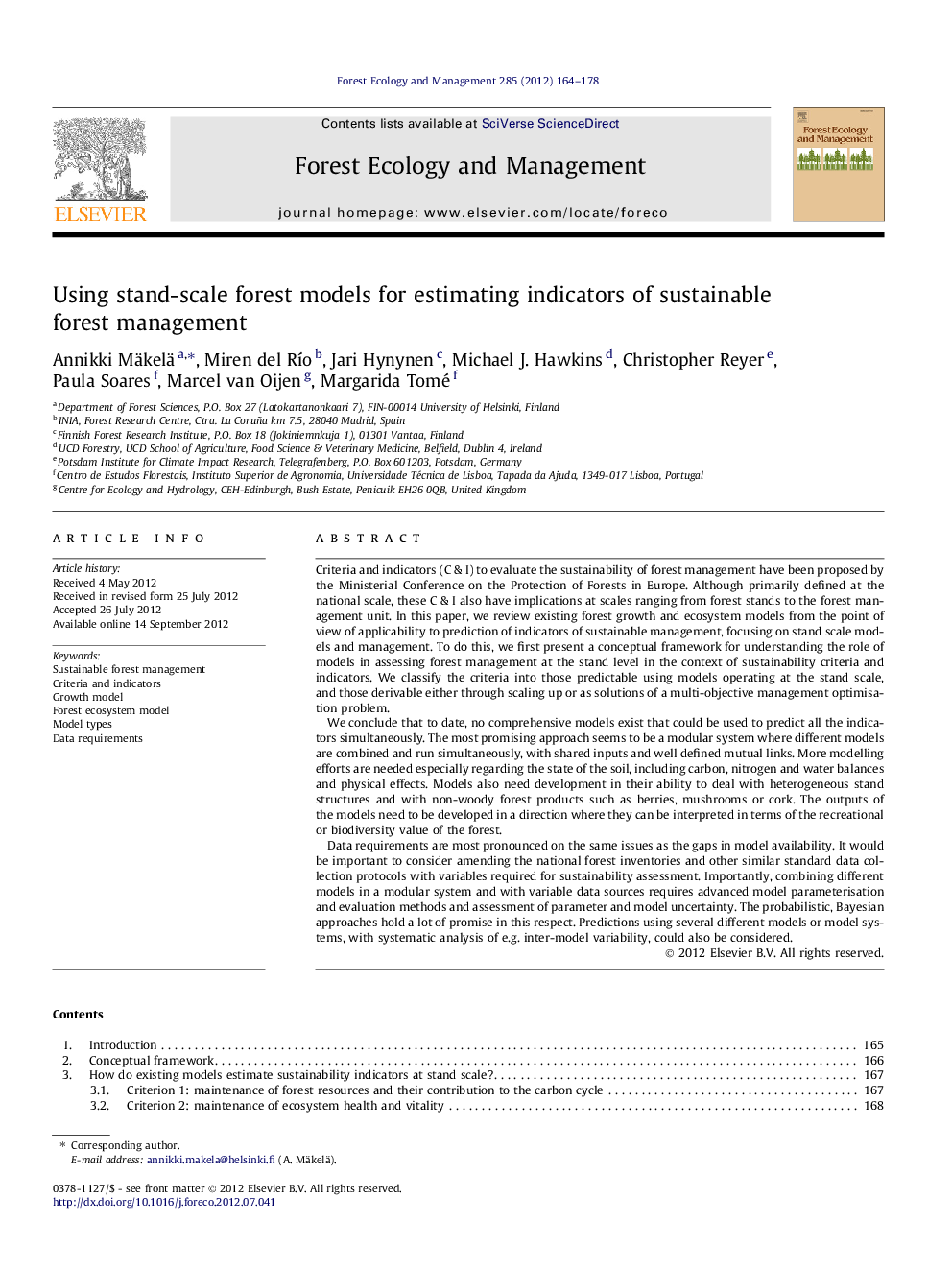| کد مقاله | کد نشریه | سال انتشار | مقاله انگلیسی | نسخه تمام متن |
|---|---|---|---|---|
| 87205 | 159237 | 2012 | 15 صفحه PDF | دانلود رایگان |

Criteria and indicators (C & I) to evaluate the sustainability of forest management have been proposed by the Ministerial Conference on the Protection of Forests in Europe. Although primarily defined at the national scale, these C & I also have implications at scales ranging from forest stands to the forest management unit. In this paper, we review existing forest growth and ecosystem models from the point of view of applicability to prediction of indicators of sustainable management, focusing on stand scale models and management. To do this, we first present a conceptual framework for understanding the role of models in assessing forest management at the stand level in the context of sustainability criteria and indicators. We classify the criteria into those predictable using models operating at the stand scale, and those derivable either through scaling up or as solutions of a multi-objective management optimisation problem.We conclude that to date, no comprehensive models exist that could be used to predict all the indicators simultaneously. The most promising approach seems to be a modular system where different models are combined and run simultaneously, with shared inputs and well defined mutual links. More modelling efforts are needed especially regarding the state of the soil, including carbon, nitrogen and water balances and physical effects. Models also need development in their ability to deal with heterogeneous stand structures and with non-woody forest products such as berries, mushrooms or cork. The outputs of the models need to be developed in a direction where they can be interpreted in terms of the recreational or biodiversity value of the forest.Data requirements are most pronounced on the same issues as the gaps in model availability. It would be important to consider amending the national forest inventories and other similar standard data collection protocols with variables required for sustainability assessment. Importantly, combining different models in a modular system and with variable data sources requires advanced model parameterisation and evaluation methods and assessment of parameter and model uncertainty. The probabilistic, Bayesian approaches hold a lot of promise in this respect. Predictions using several different models or model systems, with systematic analysis of e.g. inter-model variability, could also be considered.
► We review the role of forest stand models in assessing sustainable management.
► Sustainability is quantified using published criteria and indicators.
► No single model can predict all indicators, but modular approaches hold promise.
► Key knowledge gaps include soil processes, uneven structures and non-wood products.
► Bayesian approaches are well suited for modular models with high data requirements.
Journal: Forest Ecology and Management - Volume 285, 1 December 2012, Pages 164–178